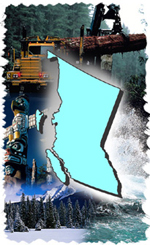Proactive disclosure
Print version   |  | 
Natural Resources Canada > Earth Sciences Sector > Priorities > Climate Change Impacts and Adaptation > Teacher's Guide
Climate Change in Canada Regional Aspects of Climate Change British Columbia

Climate change will have significant impacts on British Columbia, including increased flood dangers in some areas, drought in others, and widespread disruption of forests, fisheries, and wildlife.
Sea levels are expected to rise up to 30 cm on the northern coast of the province. This could cause increased sedimentation, coastal flooding, and permanent inundation of some natural ecosystems. This will place low-lying homes, docks, and port facilities at risk. You can expect a significant impact on insurance rates.
Potential regional impacts

- There will be some changes in fisheries populations in the oceans, from cold-water-dependent salmon to species more tolerant of warm water, such as tuna and mackerel.
- Salmon may migrate to northern rivers in search of colder water.
- Some tree species will extend their ranges northward and to higher elevations.
- Drought-tolerant species will be favoured (Douglas fir and Ponderosa pine), and in fact grasslands may replace some Douglas fir stands.
- Changes in forest composition, tree growth, fire frequency, and insect infestation will affect how and where trees will be harvested and planted. This will have a significant impact on the forest industry in British Columbia.
- Flood damage could be more severe on the coast and throughout the interior of British Columbia, and existing flood-protection works may no longer be sufficient.
- A rise in water level may drown the Fraser River delta tidal marshes, or squeeze them against the sea dykes, changing the entire ecology of the marshes.
Curriculum linkages
Earth science, Grade 11
Atmospheric science, Grade 11
|

